Enhancing Soft Skills for DevOps Engineers: Essential Non-Technical Skills to Thrive
Consulting and Client Management
Managing Expectations for Self and Others
Effective client expectation management is crucial for delivering successful projects, maintaining strong relationships, and driving repeat business. In this guide, you’ll learn how to:
- Understand client needs and goals
- Communicate clearly and frequently
- Define scope and manage change
- Deliver value and quality
- Build rapport and trust
1. Understanding Needs and Goals
Success starts with uncovering what your client truly wants and why. Use these best practices:
- Inquiry and Clarity
• Ask open-ended questions: “What problem are we solving?” “Who is the end user?”
• Drill down: “How will this feature impact revenue or efficiency?” - Active Listening
• Paraphrase key points and confirm understanding.
• Take structured notes during calls or workshops. - Expectation Alignment
• Summarize agreed outcomes in writing—email or shared doc.
• Use checklists to verify every requirement. - Scope and Deliverables
• Define boundaries, timelines, and milestones upfront.
• Renegotiate any changes before deadlines slip.

By asking, “What metrics define success?” you gain clarity. Then capture everything in a shared workspace like Confluence or Google Docs.
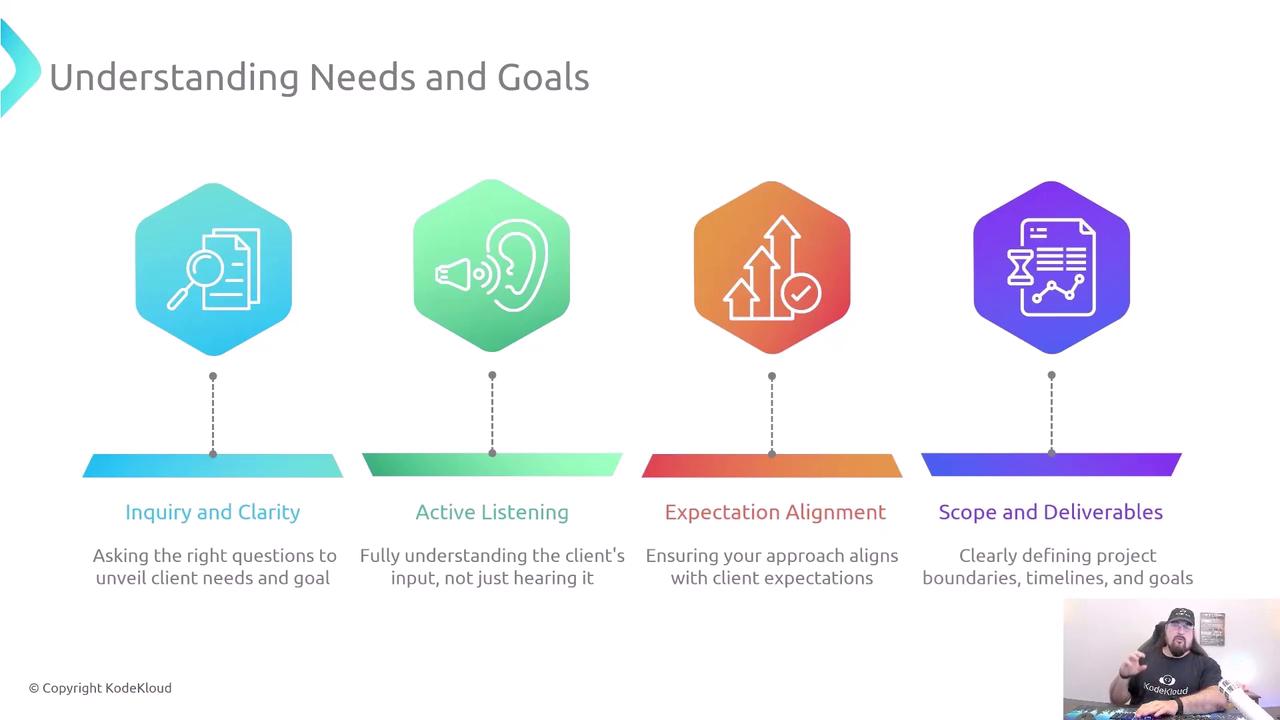
2. Clear and Frequent Communication
Transparent updates build trust and prevent surprises. Follow this framework:
| Channel | Use Case | Best Practice |
|---|---|---|
| Formal status, deliverables | Bullet summaries & clear subject lines | |
| Instant Messaging | Quick questions, clarifications | Define response SLAs (e.g., < 4 hours) |
| Video Updates | Demos, stakeholder briefings | Keep videos < 5 minutes, share transcript |
- Transparency: Report issues and risks immediately, along with mitigation plans.
- Regular Cadence: Schedule weekly or biweekly updates—consistent timing matters.
- Preferred Tools: Adapt to the client’s ecosystem (Slack, Teams, Zoom).
Note
Setting up a shared dashboard (e.g., Jira, Trello) ensures everyone has 24/7 visibility into progress.
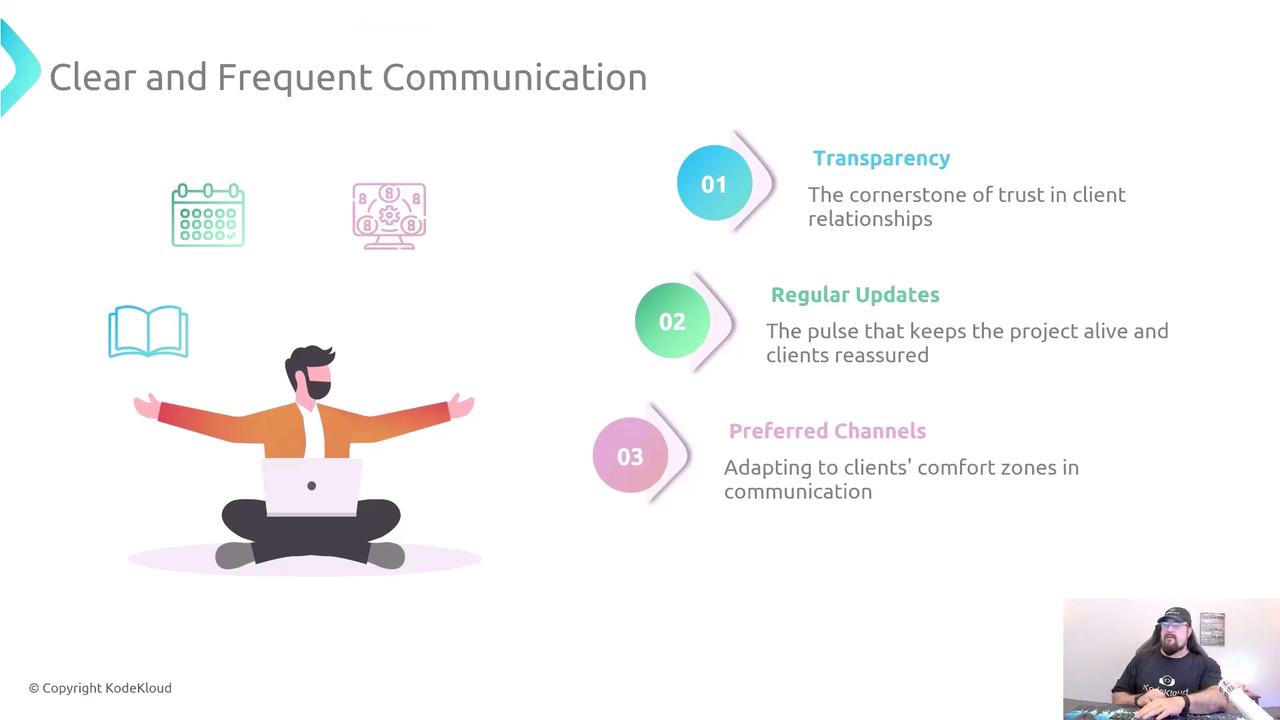
Remember: when you don’t communicate, stakeholders will fill the silence with assumptions.
3. Defining Scope and Managing Change
Clear boundaries prevent scope creep and conflicts. Implement these steps:
- Conservative Estimates
• Add contingency buffers (20–30%) if the team lacks prior experience. - Proof of Concept (PoC)
• Validate unknowns early to reduce risk in the main implementation. - The Project Triangle
• Cost ↔ Time ↔ Scope: shifting one factor affects the others. - Change-Request Process
• Define how new requests are submitted, reviewed, and approved.
• Document Service Level Agreements (SLAs), Objectives (SLOs), and KPIs.
Warning
Ignoring a formal change-procedure risks untracked work, budget overruns, and missed deadlines.
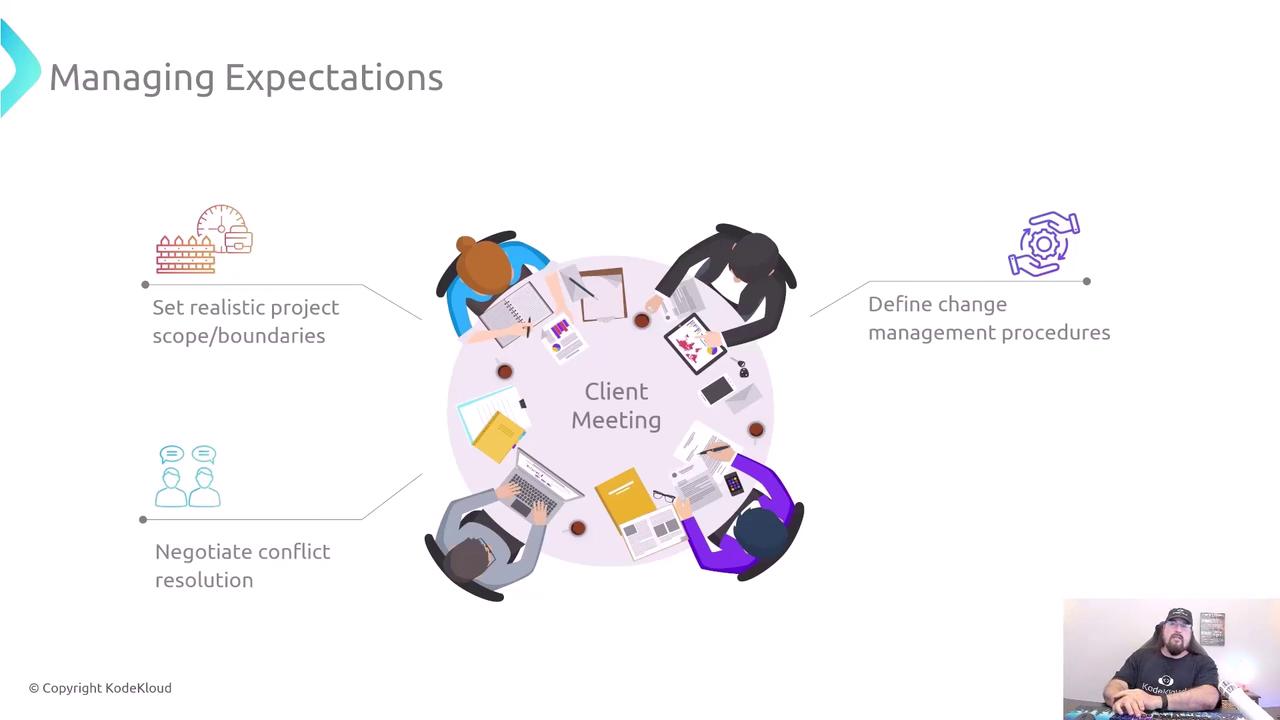
Clarify penalties or rework costs if agreed-upon milestones are missed.
4. Delivering Value and Quality
Align every deliverable to client goals and measure success with hard data:
Holistic Quality
• Reliability, performance, and maintainability must all be validated.Key Metrics
Metric Definition Target Uptime Percentage of time system is live ≥ 99.9% Release Frequency Number of production deployments Weekly / Biweekly ROI (Gain–Cost)/Cost ≥ 150% in 6 months Value-Driven Delivery
• Apply the Pareto Principle: 20% of features often yield 80% of the value.Continuous Improvement
• Collect feedback after each sprint or milestone and refine processes.
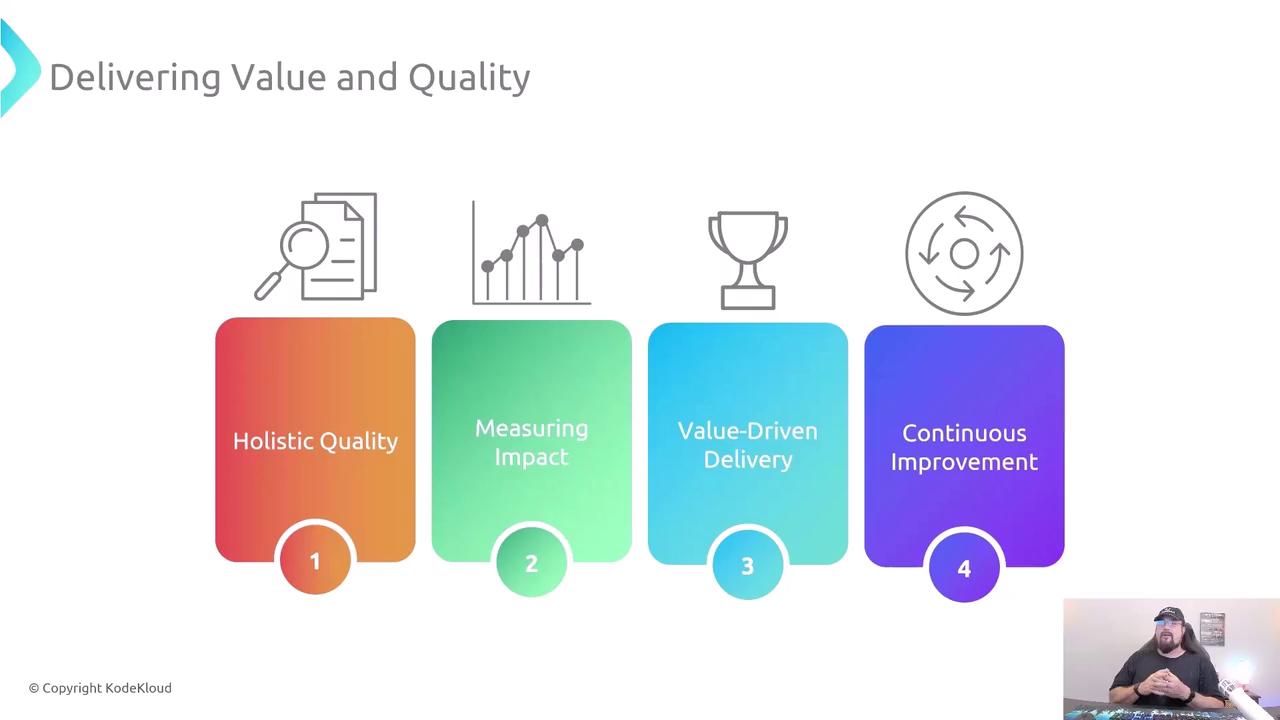
Use automation—dashboards, AI-assisted tests, and CI/CD pipelines—to keep quality consistent.
5. Building Rapport and Trust
Long-term relationships rely on empathy and reliability:
- Professionalism & Empathy
• Acknowledge concerns and emotions; respond with respect. - Reliability
• Deliver on promises or renegotiate proactively. - Exceed Expectations
• Surprise clients with extra insights, faster delivery, or a bonus deliverable. - Collaborative Partnership
• Invite clients into retrospectives and planning sessions.
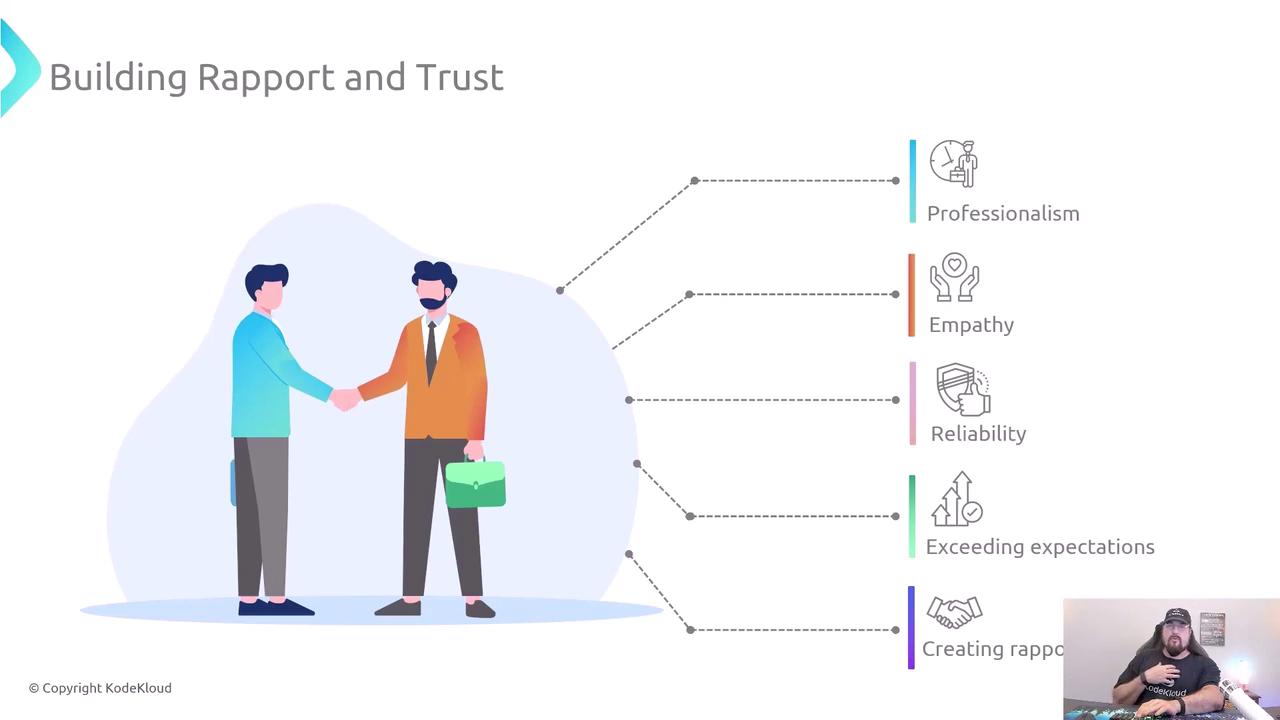
If a commitment breaks down, address it immediately: apologize, explain the root cause, propose corrective actions, and listen to feedback.
Summary & Next Steps
By mastering these five pillars—Needs & Goals, Communication, Scope & Change, Value & Quality, and Rapport & Trust—you’ll consistently meet or exceed client expectations. Keep your agreements clear, maintain open feedback loops, and stay customer-centric.
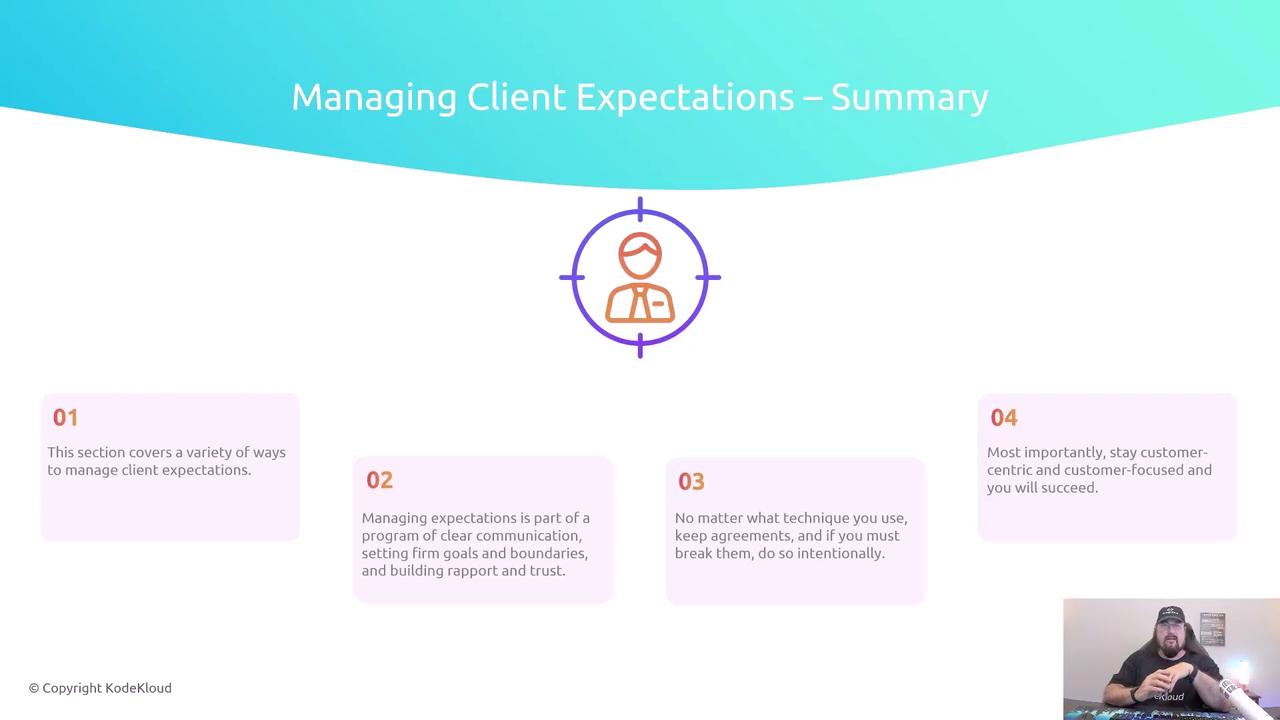
References
Watch Video
Watch video content